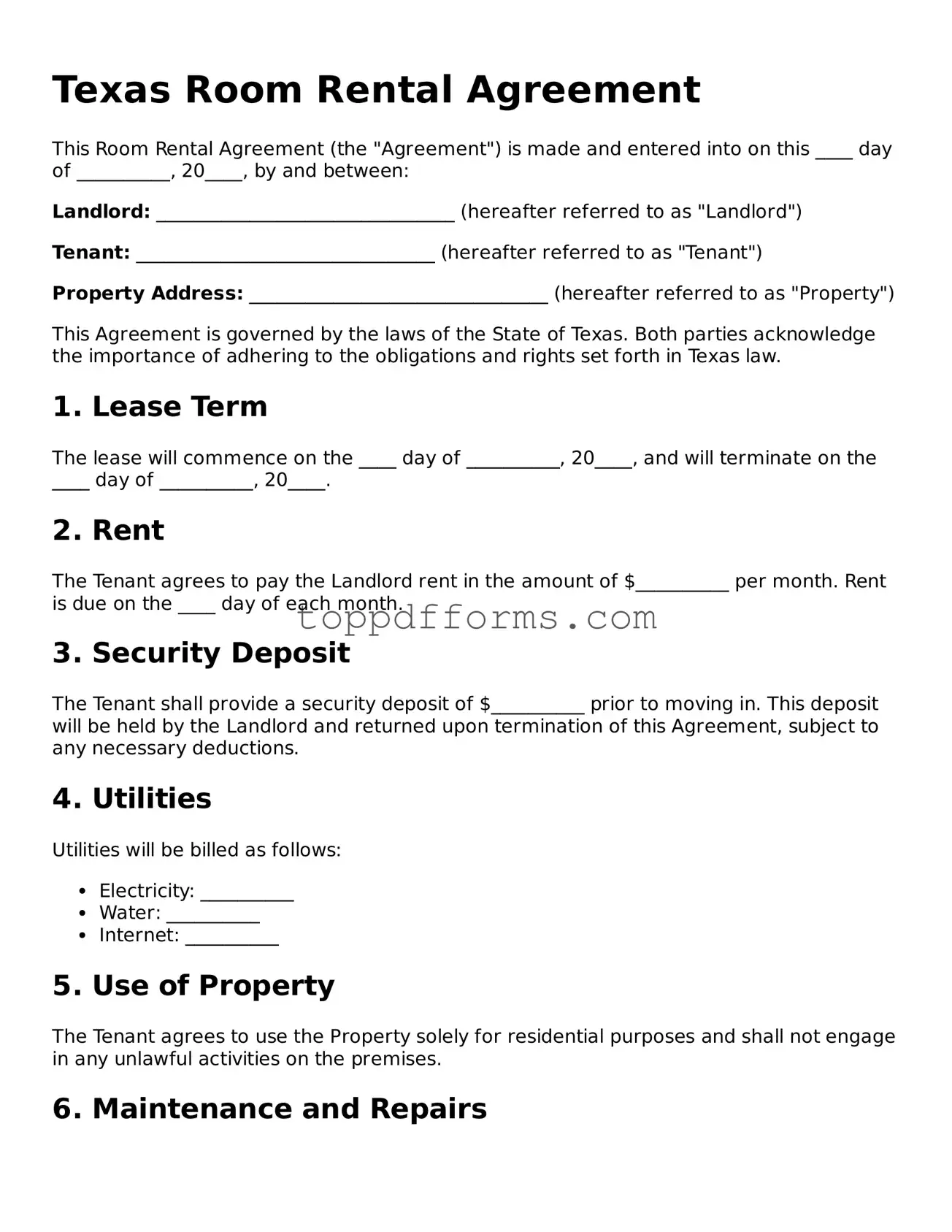Filling out a Texas Room Rental Agreement can be straightforward, but many people make common mistakes that can lead to issues down the line. One frequent error is not providing accurate personal information. Always double-check your name, address, and contact details. If any information is incorrect, it can create confusion later, especially when it comes to communication or legal matters.
Another mistake is overlooking the rental period. Clearly state the start and end dates of the rental. Some people forget to specify the duration, which can lead to misunderstandings about when the agreement begins and ends. This can create problems for both parties involved.
Many individuals also fail to read the entire agreement before signing. It’s essential to understand all terms and conditions. Ignoring sections about deposits, late fees, or maintenance responsibilities can lead to unexpected costs or disputes. Take the time to review everything thoroughly.
Some renters mistakenly assume that verbal agreements are enough. It’s crucial to have everything documented in writing. If a landlord promises repairs or adjustments, these should be included in the agreement. Relying on a handshake can leave you vulnerable.
Another common oversight is neglecting to include the security deposit details. Specify the amount and conditions for its return. Not mentioning this can lead to disputes when it’s time to move out. Clarity is key in avoiding misunderstandings.
People often forget to note the rules regarding pets. If you have a pet or plan to get one, make sure to address this in the agreement. Some landlords have strict no-pet policies. Failing to mention this could result in penalties or eviction.
Additionally, neglecting to include utility responsibilities is a common mistake. Clarify who pays for what. Will the landlord cover water and electricity, or is that on you? This detail can significantly affect your monthly budget, so it’s important to be clear.
Another area where mistakes happen is in the maintenance responsibilities. Be specific about who is responsible for repairs. If something breaks, you want to know whether it’s your job to fix it or the landlord’s. This can prevent frustration later on.
Lastly, many people forget to sign and date the agreement. It may seem minor, but without signatures, the document isn’t valid. Ensure that both parties sign and date the agreement to make it legally binding.
